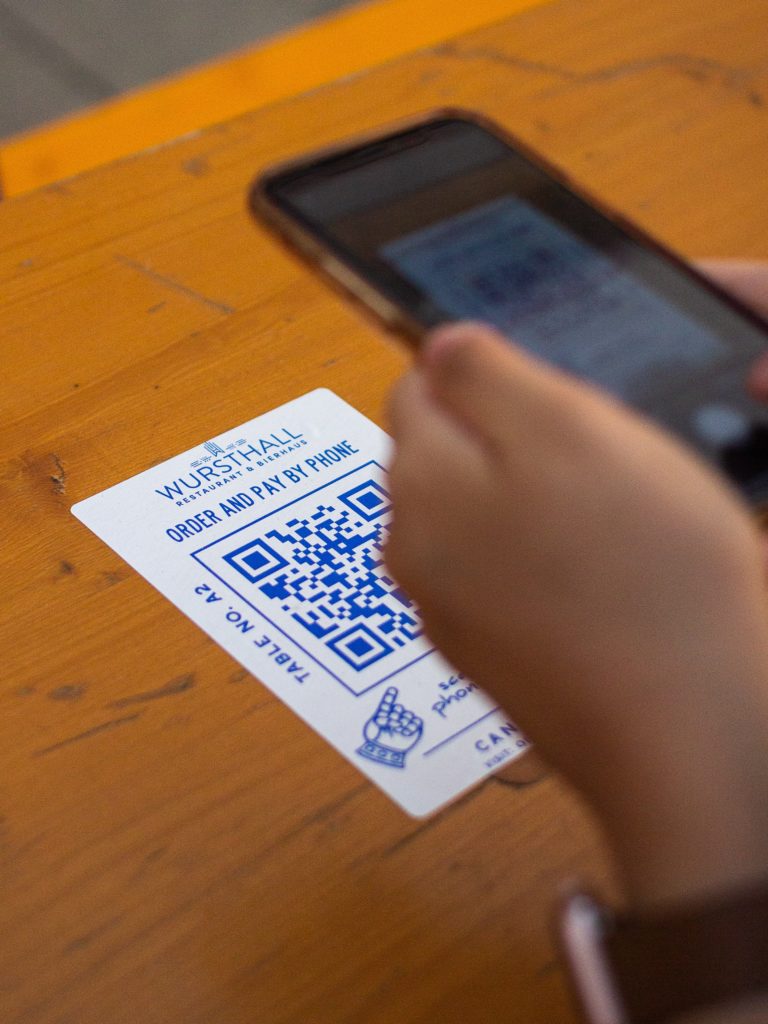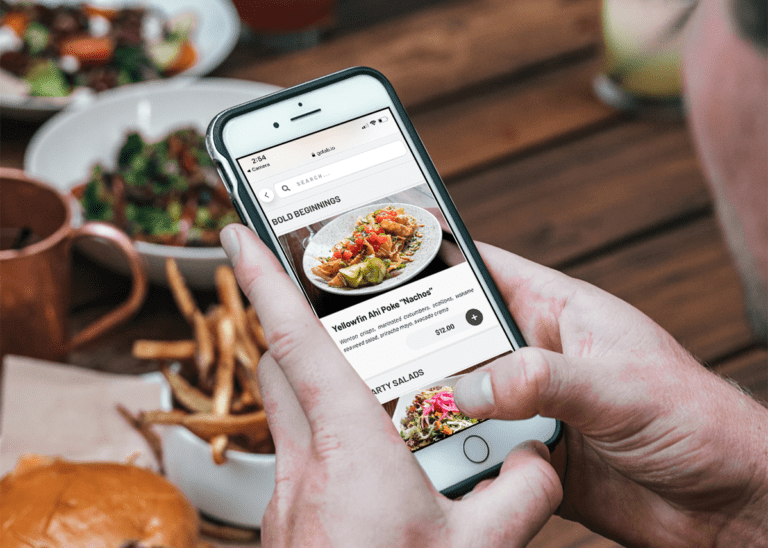5 Pieces of Restaurant Technology Every Establishment Needs

As a restaurant owner, when you first open a new restaurant, brewery, or another dining experience, it can be easy—if wishful—to think, “If we have the best food, beer, or cocktails everything will work out, and we’ll soon have more guests than we know what to do with.” However, sometimes you need some extra help with getting the word out to prospective restaurant customers or keeping up with demand as they start coming in droves.To help operators attract new guests and keep them coming back new managerial, promotional, contactless ordering, and equipment technology has been increasingly introduced within the hospitality and restaurant industry in recent years. From an online ordering system and outsourced delivery to improved kitchen technology, different hospitality establishments can find the restaurant technology most suited to their needs.
The Best Technology Depends on You
Different types of restaurants and establishments derive the most benefit from different types of restaurant technologies. Social media or a mobile app may best serve a food truck. A restaurant committed to classic French cuisine might best be served by a No-POS system or high-tech kitchen implements.When considering the optimal technology for your unique restaurant operation, remember that no one-size-fits-all approach remains universal across the hospitality industry. Even with more blanket restaurant technology systems, specific applications will vary between restaurant operators. While the technologies presented here can benefit all operators, your implementation priority depends on which provides the most utility and fastest return on investment.
#1 No-POS Systems
“No-POS” may earn a few questioning looks, but these solutions still provide all operators with all the essential POS functionalities—only decentralized. Traditional POS systems are intertwined with the concept of the “sales funnel,” which seeks to direct prospective patrons from becoming aware of your establishment to becoming guests. However, the inherent challenge with POS systems is the reliance on the single “point” at the bottom of the funnel.POS systems require servers to act as intermediaries when entering orders and processing guests’ payments. The structure of your hospitality and guests’ experience come somewhat predetermined with a traditional POS:
- Servers write down or enter orders, which may be prone to error.
- Because guests typically cannot access the POS, servers must continually touch the tables in their area for reorders.
- Servers present guests with their bills, process their payments and return their cards or change.
No-POS replaces the singular with limitless points of sale. Guests access a contactless menu to order from a No-POS system from their smartphones, typically by scanning QR codes. Contactless payment has already shown strong adoption among guests, with $6 trillion in global transactions expected by 2024. With a No-POS system and a contactless menu, guests can make their decisions, order, reorder, leave comments, and pay from their smartphone.
Managing an Entire Establishment with a No-POS
The benefits of No-POS extend beyond ordering and payments to the full scope of management tools restaurant operators need. From your No-POS, operators can:
- Fully manage a contactless menu, from branding and layouts to updated or temporary offerings (e.g., specials, seasonal menus)
- Track ingredient inventory, providing guests with real-time notice if something is out-of-stock (and before they order it)
- Open ghost kitchens (i.e., set up a separate or secondary kitchen for delivery or take-out only meals)
- Monitor order and guest volume over time to better identify tendencies for targeted interactions and optimized staff scheduling
- Scale with “limitless points of sale” to accommodate fluctuations in order volume and long-term growth
- Completely restructure the guests’ experience and tailor service interactions according to each table’s preferences.
A No-POS system allows operators to facilitate all of their operations while re-envisioning how and when they deliver their most impactful hospitality interactions—without the traditional restrictions of the single input of a POS.
Additional Advantages Over Traditional POS
The critical distinction between No-POS and traditional systems is that the former is cloud-based. With a cloud-based system and contactless menu, guests can still browse offerings, order, and pay even if your establishment’s Wi-Fi network temporarily goes down. When a traditional system goes down, your staff must suddenly pivot to cope with the frenzy, which increases the chance of incorrect or missed orders and dissatisfied customers.Further, a cloud-based No-POS system requires minimal investment in new touch screens or other hardware. The only device needed for guests to order and pay is their smartphone.No-POS expands possibilities for operators. For example, one person can run a single food truck by exclusively focusing on preparation. Guests will order and pay by smartphone, and integrating a No-POS system with a kitchen display screen (KDS) will display the incoming orders. Without worrying about physical touchpoints when processing payments, a single operator can increase both efficiency and sanitation.

#2 Online Ordering and Outsourced Delivery
Whether convenience, necessity, or preference, sometimes your guests can’t stay long despite their desire to enjoy your offerings. While calling in orders by phone has been popular for quite some time, many operators have already adapted to accepting online orders. Time-strapped and stay-at-home guests increasingly adopt the option, as 42% of food purchases are made online, and 70% prefer the method when ordering delivery.Online ordering’s rise in popularity coincides with the introduction of delivery outsourcing options, such as Uber Eats, DoorDash, and Grubhub. Without taking on the overhead risk to offer delivery, operators can suddenly extend their reach to guests like never before. Since 2014, online ordering and delivery have tripled the growth rates of dine-in traffic. The surge in sales has seen establishments partners with Grubhub increase their revenue by 30% on average.

Your Own Website or Third Parties?
If you choose to pursue online ordering, you’ll need to consider whether to build and run your own website or partner with a third party. Third parties facilitate online ordering and delivery, but guests have also expressed a strong preference—70%—for ordering directly with custom apps or sites rather than via third party.
#3 Social Media
Social media presents operators with the chance to present bite-sized portions of your hospitality directly to guests regardless of their location. As the experience you’ve crafted relies on guests’ senses, social media provides the means to directly market to regular and prospective guests with high-quality images and video.Amongst the various social media platforms, the primary four to choose from are Facebook, Instagram, Twitter, and Youtube. Each provides a different type of engagement experience:
- Facebook offers the most engagement options, with long- and short-form posts, videos, images, and online storefronts utilized widely. 71% of adults in the U.S. use Facebook, and 74% of users log in daily. Guests are also most likely to give high ratings on Facebook.
- Instagram and Twitter offer shorter snippets of content to entice guests and remind them how much they love your offerings. Instagram is the more visual platform, though video and images remain common on Twitter. Where Instagram and Twitter highly differ is in user’s sessions:
- Twitter users average less than four minutes per session, but they spend 26% more time viewing ads.
- Instagram users spend an average of 28 minutes per session, and 33% of the most-viewed “Stories” are posted by businesses.
- YouTube remains the foremost platform for videos, especially for more extended media. If you can figure out how to best leverage Youtube, it may provide the best avenue to engage new guests via social media, as 90% of users have discovered a brand while browsing content.
Interact Directly with Guests
Beyond visually marketing to guests via social media, you can also cultivate your brand’s personality while interacting with them. Posting humorous, helpful, uplifting, or other types of content helps reinforce your establishment’s identity and reach more people.

#4 Inventory Tracking and Management
Inventory insight helps operators increase savings by reducing waste and identify advantageous margins with different offerings. A dedicated system that helps track your inventory will help you stay on top of low quantities and target potential fluctuations.However, relying exclusively on electronic assistance leaves your inventory vulnerable to missed instances of spoilage. Even with an inventory management system, operators should assign specific staff to inspect ingredients to ensure freshness and sanitation first-hand.With detailed inventory data, operators can begin identifying where they are overspending on ingredients and how to repurpose any surplus. Perhaps the cost per unit of a specific ingredient means that buying in a different quantity or from another vendor will yield significant savings. If a quick glance at your inventory reveals that you have a surplus, adding a special prevents waste and provides your guests another offering. Repurposing may lead to new menu staples.
#5 High Tech Kitchen Equipment
Sometimes the wisest investment for an operator is in supporting the efforts to prepare their offerings. Advancements in kitchen technology help increase efficiency and ensure sanitation:
- A KDS organizes incoming orders so that staff doesn’t have to manage tickets, which may get lost or messy in their proximity to the organized chaos that is food preparation. Additionally, kitchen display screens eliminate a series of physical touchpoints that may counteract operators’ sanitation efforts.
- Bluetooth temperature sensors allow operators to monitor and control the temperatures for ingredients, equipment, and completed dishes. Operators can measure temperatures in four seconds or less and set alerts to notify them should anything fall outside of food safety ranges (i.e., Hazard Analysis and Critical Control Point). Some sensors will even log temperatures for you.
Upgrading Your Operations With Restaurant Technology
Regardless of which restaurant technology may provide your establishment with the most benefit, they’re all worth exploring. Different technologies address different areas to increase efficiencies, from overhauling how you engage your guests during in-person visits or via social media to upgrading your POS and kitchen equipment.Suppose a No-POS system sounds like it should be at the top of your list. In that case, GoTab provides a cloud-based solution that unifies contactless menus, ordering, payment, inventory management, order volume tracking, and more while decentralizing your points of sale.Sources:
- Business Insider. This is How Restaurants Can Boost Revenue by 30%. https://www.businessinsider.com/sc/online-ordering-helps-restaurant-business-2015-10
- EHL Insights. 7 Restaurant Technology Trends to Watch in 2021. https://hospitalityinsights.ehl.edu/restaurant-technology-trends
- Fast Casual. 7 Technologies Transforming the Restaurant Industry. https://www.fastcasual.com/articles/7-technologies-transforming-the-restaurant-industry/
- Food Delivery News. Ordering Online and Food Delivery Statistics. http://fooddeliverynews.com/online-ordering-and-food-delivery-statistics
- Hospitality Technology. 70% of Consumers Prefer to Order Directly from Restaurants, Not Third-Party Services. https://hospitalitytech.com/70-consumers-prefer-order-direct-restaurants-not-third-party-services
- Nation’s Restaurant News. Restaurant Takeout and Delivery are Taking a Bite Out of Dine-In Traffic. https://www.nrn.com/sponsored-content/restaurant-takeout-and-delivery-are-taking-bite-out-dine-traffic
- Town Square. Social Media Statistics for Restaurants You Need to Know Right Now. https://beambox.com/townsquare/social-media-statistics-for-restaurants-you-need-to-know-right-now
- WebstaurantStore. Restaurant Inventory Management. https://www.webstaurantstore.com/article/138/restaurant-inventory-management.html

Tap Room Playbook Episode 2:
When you really think about it, with everything managers need to do in a tap room, the hospitality aspect is often overlooked.
Watch Now →.webp)
Tap Room Playbook Episode 3:
The best breweries pay attention to what their brand stands for. How do the best brewers bring their brand to life?
Watch Now →
